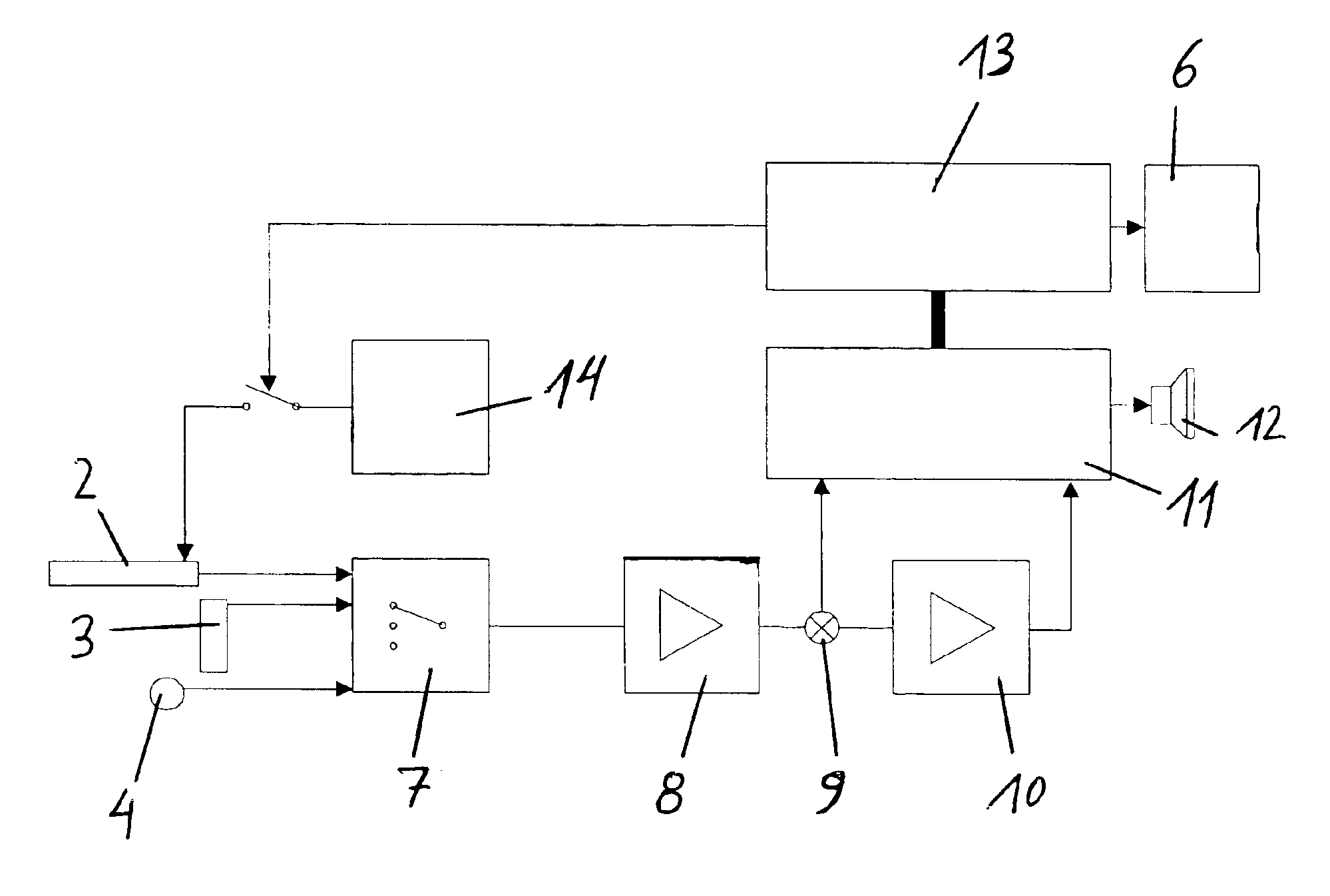Device for locating trapped victims and a method of operating such a device
a technology for locating trapped victims and victims, applied in the field of locating devices, can solve the problems of inability to determine inconvenient operation, and inability to accurately locate the exact location of trapped victims,
- Summary
- Abstract
- Description
- Claims
- Application Information
AI Technical Summary
Benefits of technology
Problems solved by technology
Method used
Image
Examples
Embodiment Construction
[0024]Three ferrite antennas 2, 3 and 4 are disposed in the housing 1 of the inventive locating device. The antennas are preferably orthogonal to one another and of various lengths to make possible the compact traditional dimensioning of the housing 1 in terms of its shape. The shortest antenna 4 is maximally half as long as the longest antenna 2 of the locating device, while the two longer antennas 2 and 3 have lengths of approximately 8 cm or 6 cm. The length of antenna 4 is preferably approximately a quarter-length of the longest antenna 2, which is approximately 2 cm in absolute numbers.
[0025]As can seen in FIG. 2, the two longer antennas 2 and 3 lie essentially parallel to the lateral side or the face of a printed circuit board 5, which contains receiving and transmitting electronics and on the optical display unit 6 attached to said printed circuit board as well. Symbols are provided on the display unit 6 that may be triggered to determine direction and distance to the incomin...
PUM
 Login to View More
Login to View More Abstract
Description
Claims
Application Information
 Login to View More
Login to View More - R&D
- Intellectual Property
- Life Sciences
- Materials
- Tech Scout
- Unparalleled Data Quality
- Higher Quality Content
- 60% Fewer Hallucinations
Browse by: Latest US Patents, China's latest patents, Technical Efficacy Thesaurus, Application Domain, Technology Topic, Popular Technical Reports.
© 2025 PatSnap. All rights reserved.Legal|Privacy policy|Modern Slavery Act Transparency Statement|Sitemap|About US| Contact US: help@patsnap.com



